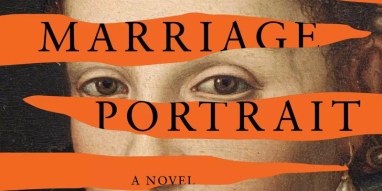 Tom Wolfe’s The Bonfire of The Vanities is an American classic. It is an epic portrait of New York City in the late 1980s, in the tradition of Charles Dickens’ portraits of 19th century London. The story revolves around Sherman McCoy, a Wall Street financier who, along with his mistress, is involved in a hit and run accident in the Bronx which ends up injuring a Black youth. This accident is soon picked up by the tabloid journals and becomes a political cause celebre used by the Bronx District Attorney’s office to demonstrate that Black lives matter just as much as White one’s. The District Attorney reasons that a well-publicized arrest and trial of a wealthy White man will show the mostly Black and Latino citizens of the Bronx that he is on their side and will help him win re-election. Another person who uses the case for his own vested interests is the fiery Harlem preacher, Reverend Bacon. Wolfe meticulously describes how Sherman is taken down by the collusion of the tabloid media and the political class. While Sherman is by no means innocent– leaving the scene of an accident is a crime in itself– he is not given a fair trial. The optics of the case clearly prejudice the D.A.’s office against him. They are out to deem him guilty, whatever the truth of the matter may be, so that they can gain political advantage.
Tom Wolfe’s The Bonfire of The Vanities is an American classic. It is an epic portrait of New York City in the late 1980s, in the tradition of Charles Dickens’ portraits of 19th century London. The story revolves around Sherman McCoy, a Wall Street financier who, along with his mistress, is involved in a hit and run accident in the Bronx which ends up injuring a Black youth. This accident is soon picked up by the tabloid journals and becomes a political cause celebre used by the Bronx District Attorney’s office to demonstrate that Black lives matter just as much as White one’s. The District Attorney reasons that a well-publicized arrest and trial of a wealthy White man will show the mostly Black and Latino citizens of the Bronx that he is on their side and will help him win re-election. Another person who uses the case for his own vested interests is the fiery Harlem preacher, Reverend Bacon. Wolfe meticulously describes how Sherman is taken down by the collusion of the tabloid media and the political class. While Sherman is by no means innocent– leaving the scene of an accident is a crime in itself– he is not given a fair trial. The optics of the case clearly prejudice the D.A.’s office against him. They are out to deem him guilty, whatever the truth of the matter may be, so that they can gain political advantage.
Race is an important theme of the novel. Wolfe depicts the New York City of more than three decades ago, in which White Manhattanites were terrified of going to Harlem and the Bronx. When Sherman and Maria initially get lost in the Bronx on the way back from JFK Airport, they are both terrified of the Black youths they encounter on the highway. They later justify leaving the scene of the accident by likening it to a “fight in the jungle”. While this is clearly a racist and problematic attitude, it is an accurate description of the way that many White people felt at the time. Even today, though many of these neighborhoods have now gentrified, White people are reluctant to visit them. Continue reading “Review: The Bonfire of The Vanities by Tom Wolfe”
 Federico De Roberto’s novel The Viceroys is one of the classics of Italian realism. Originally published in 1894, it was not translated into English until 1962. This translation has recently been reissued by Verso, allowing a new generation to become acquainted with this lost 19th century classic.
Federico De Roberto’s novel The Viceroys is one of the classics of Italian realism. Originally published in 1894, it was not translated into English until 1962. This translation has recently been reissued by Verso, allowing a new generation to become acquainted with this lost 19th century classic. I have long been fascinated by Renaissance Italy and particularly by the Medici family. Regular readers of this blog may recall my earlier review of John L’Heureux’s T
I have long been fascinated by Renaissance Italy and particularly by the Medici family. Regular readers of this blog may recall my earlier review of John L’Heureux’s T